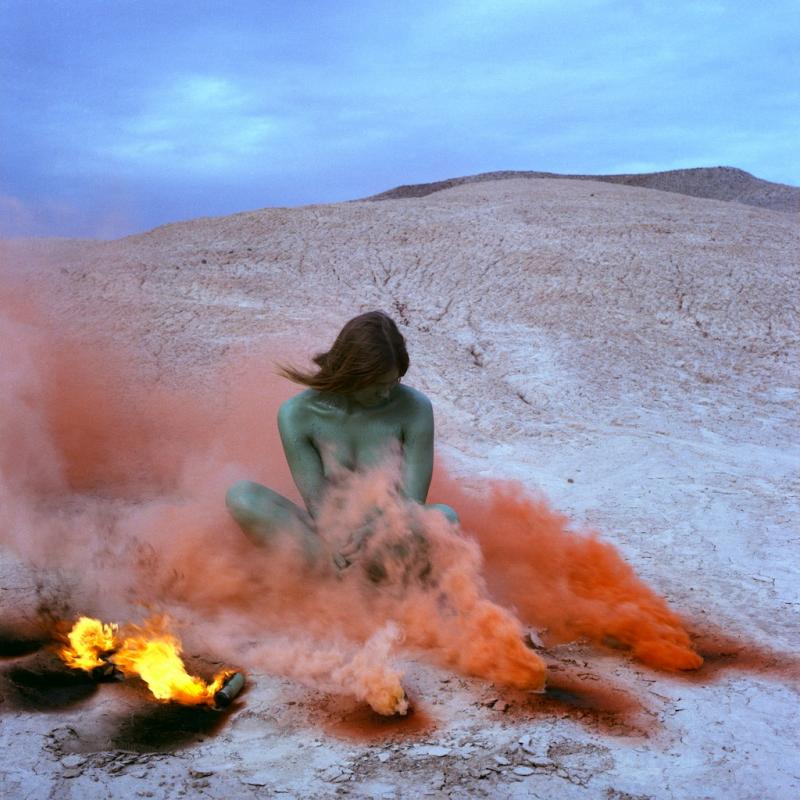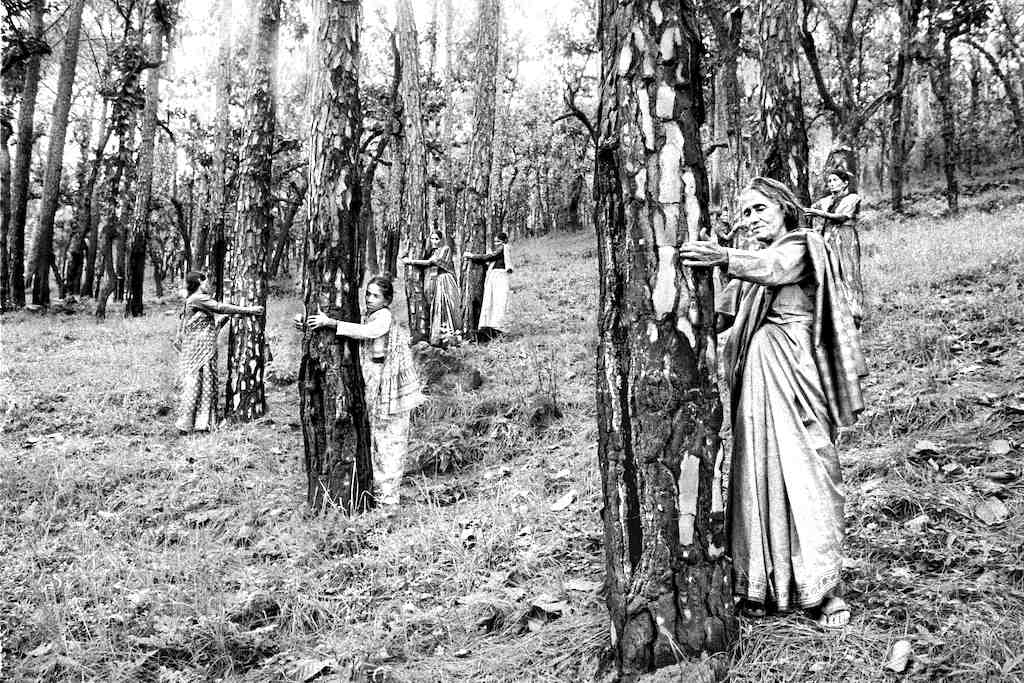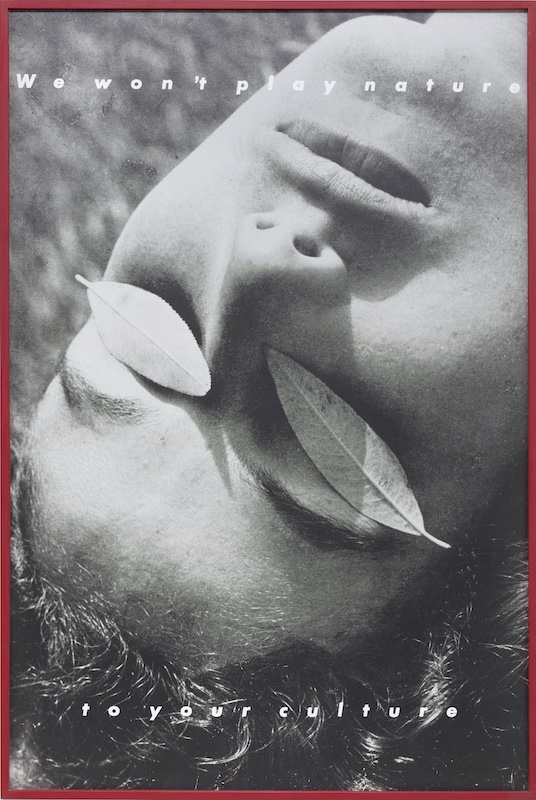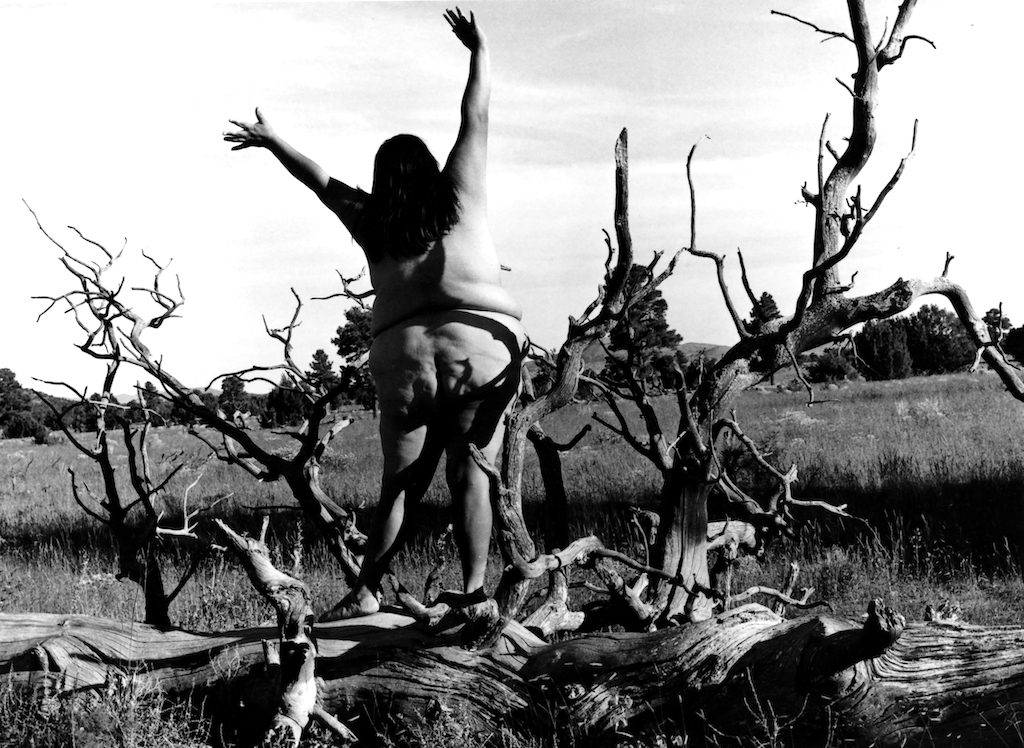RE/SISTERS: A Lens on Gender and Ecology, Barbican review - women fighting to protect the environment | reviews, news & interviews
RE/SISTERS: A Lens on Gender and Ecology, Barbican review - women fighting to protect the environment
RE/SISTERS: A Lens on Gender and Ecology, Barbican review - women fighting to protect the environment
Eco-warriors and art as activism

RE/SISTERS is a show about the brave women who’ve been fighting to protect our planet and the artists whose work – mainly in film and photography – is, in itself, a form of protest. The opening section, Extractive Economics demonstrates the problem – companies trashing the planet for profit, regardless of the cost to people and the environment.
Simryn Gill’s photographs offer horrifying evidence of a mindset which views the earth as resource to be polluted and plundered at will. A mangrove forest in Malaysia is festooned with rubbish washed in by the tide while in Pilbara, Western Australia vast tracts of land are hideously scarred by open pit mining on an industrial scale.
 The communities who suffer the decimation of their environment rarely reap the rewards. Mary Mattingly documents the pollution caused in the Congo by mining for cobalt that is exported to the U.S to make batteries, jet engine blades and camera sensors. Sim Chi Yin photographs houses along the Mekong River in Vietnam whose foundations have been undermined by the removal of tons of sand for export to Singapore and Malaysia, ironically, for building work.
The communities who suffer the decimation of their environment rarely reap the rewards. Mary Mattingly documents the pollution caused in the Congo by mining for cobalt that is exported to the U.S to make batteries, jet engine blades and camera sensors. Sim Chi Yin photographs houses along the Mekong River in Vietnam whose foundations have been undermined by the removal of tons of sand for export to Singapore and Malaysia, ironically, for building work.
Taloi Havini’s 3 screen video Habitat 2017 follows Agata as she walks to work
across a desert created by her Australian employers whose copper mine in Bougainville, Papua New Guinea is the largest open pit mine in the world. Beautiful shots reveal the decimation of a huge area where the rivers run cloudy with spoil and the rocks on the riverbed are coated with a thick layer of ghostly blue sediment.
![Fina Miralles, Relacions. Relació del cos amb elements naturals. El cos cobert de palla [Documentació de l'acció realitzada el gener de 1975 a Sabadell, Espanya] / Relationship: The Body’s Relationship with Natural Elements. The Body Covered with Straw, 1975 Courtesy of MACBA, Museu d’Art Contemporani de Barcelona Fina Miralles, Relacions. Relació del cos amb elements naturals. El cos cobert de palla [Documentació de l'acció realitzada el gener de 1975 a Sabadell, Espanya] / Relationship: The Body’s Relationship with Natural Elements. The Body Covered with Straw, 1975 Courtesy of MACBA, Museu d’Art Contemporani de Barcelona](/sites/default/files/images/stories/ART/Sarah_Kent/Sisters%20Fina%20Miralles%2C%20Relaciones%2C%20Relacio%20del%20cos%20amb%20elements%20naturals%2C%20El%20cos%20cobert%20de%20palla%20%5BDocumentacio%20de%20l%27accio%20realitzada%20el%20gener%20de%201975%20a%20Sabadell%2C%20Espanya%5D%2C%201975%20copy_2.jpg) The next section, Protest documents, among other things, the demonstrations at Greenham Common in the 1980s; the women of Flint, Michigan who fought for compensation when their drinking water was polluted with lead in 2014 and the tree huggers of Uttarakhand who began, in the 1970s, to protect their Himalayan forests from commercial logging (pictured above right).
The next section, Protest documents, among other things, the demonstrations at Greenham Common in the 1980s; the women of Flint, Michigan who fought for compensation when their drinking water was polluted with lead in 2014 and the tree huggers of Uttarakhand who began, in the 1970s, to protect their Himalayan forests from commercial logging (pictured above right).
American artist, Agnes Denes demonstrated her contempt for what she called “misplaced priorities” by planting a field of wheat on an 8,000 square metre area of Battery Park that is overlooked by the skyscrapers of Wall Street. An exercise in “wasting valuable real estate”, the project was designed as a deliberate confrontation that would encourage people to consider the relative importance of food over finance and the quality of life versus commerce.
 So far so good, the message is clear; the women included have either risked life and liberty to demonstrate (sometimes for years on end) against those who wantonly endanger the environment or are artists who expose the culprits or make work in protest.
So far so good, the message is clear; the women included have either risked life and liberty to demonstrate (sometimes for years on end) against those who wantonly endanger the environment or are artists who expose the culprits or make work in protest.
Upstairs at the Barbican, though, the show focuses on artists who declare some kind of affinity with mother earth and things get a bit fuzzy. Francesca Woodman photographs herself wrapped around trees, in Nature Self-portraits Laura Aguilar photographs her naked body among boulders and dead branches as though she formed an integral part of the landscape (pictured below); Ana Mendieta lathers mud over her body so as to fuse with the soil and, covered from head to toe in straw, Fina Miralles transforms herself into a female equivalent of the Green Man (pictured above left: detail).
Some of the images are beautiful while others are moving; but I have a problem with the underlying concept, which appears to legitimise the hoary old trope characterising women as nature (irrational, volatile, passive, unstable and potentially dangerous) and men as culture (rational, proactive, reliable, creative and stable) – all of which I find invidious, loathsome and just plane wrong.
I think Barbara Kruger agrees with me. Over the photograph of a supine woman’s face, whose eyes are covered in leaves, she writes “We won’t play nature to your culture” (pictured above right), which succinctly rejects the ethos embraced by the other artists.
Judy Chicago’s Immolation IV from Women and Smoke 1972 (main picture) is in a class of its own. A naked woman sits cross-legged in the desert encircled by plumes of red smoke. The event was a riposte to land artists like Michael Heizer, who famously removed 244,000 tons of rock to create Double Negative, a 1500 foot deep canyon in Nevada. Chicago’s happening left no mark on the landscape yet is just as memorable as the scar needlessly inflicted by Heizer.
 The exhibition ends with a glorious installation by Anne Duk Hee which celebrates the gender fluidity of sea creatures. Lounging on blue beanbags and pink shrimp cushions, we are invited to watch the underwater antics of translucent shrimps, exotic jellyfish and crabs with fan shaped claws.
The exhibition ends with a glorious installation by Anne Duk Hee which celebrates the gender fluidity of sea creatures. Lounging on blue beanbags and pink shrimp cushions, we are invited to watch the underwater antics of translucent shrimps, exotic jellyfish and crabs with fan shaped claws.
Hee revels in the sensual beauty of the marine world much as the painter, Georgia O’Keefe gloried in the fleshy eroticism of flowers. Ziggy and the Starfish 2018 is replete with gorgeous images of undulating fronds, phallic protuberances, copulating critters and explosive underwater ejaculations. It’s a potent reminder of the marvels that will be lost if our reckless disregard for nature continues.
- RE/SISTERS: A Lens on Gender and Ecology is at the Barbican until 14 January 2024
- More visual arts reviews on theartsdesk
rating
Explore topics
Share this article
The future of Arts Journalism
You can stop theartsdesk.com closing!
We urgently need financing to survive. Our fundraising drive has thus far raised £49,000 but we need to reach £100,000 or we will be forced to close. Please contribute here: https://gofund.me/c3f6033d
And if you can forward this information to anyone who might assist, we’d be grateful.

Subscribe to theartsdesk.com
Thank you for continuing to read our work on theartsdesk.com. For unlimited access to every article in its entirety, including our archive of more than 15,000 pieces, we're asking for £5 per month or £40 per year. We feel it's a very good deal, and hope you do too.
To take a subscription now simply click here.
And if you're looking for that extra gift for a friend or family member, why not treat them to a theartsdesk.com gift subscription?
more Visual arts
 'We are bowled over!' Thank you for your messages of love and support
Much-appreciated words of commendation from readers and the cultural community
'We are bowled over!' Thank you for your messages of love and support
Much-appreciated words of commendation from readers and the cultural community
 Abstract Erotic, Courtauld Gallery review - sculpture that is sensuous, funny and subversive
Testing the boundaries of good taste, and winning
Abstract Erotic, Courtauld Gallery review - sculpture that is sensuous, funny and subversive
Testing the boundaries of good taste, and winning
 Edward Burra, Tate Britain review - watercolour made mainstream
Social satire with a nasty bite
Edward Burra, Tate Britain review - watercolour made mainstream
Social satire with a nasty bite
 Ithell Colquhoun, Tate Britain review - revelations of a weird and wonderful world
Emanations from the unconscious
Ithell Colquhoun, Tate Britain review - revelations of a weird and wonderful world
Emanations from the unconscious
 Rachel Jones: Gated Canyons, Dulwich Picture Gallery review - teeth with a real bite
Mouths have never looked so good
Rachel Jones: Gated Canyons, Dulwich Picture Gallery review - teeth with a real bite
Mouths have never looked so good
 Yoshitomo Nara, Hayward Gallery review - sickeningly cute kids
How to make millions out of kitsch
Yoshitomo Nara, Hayward Gallery review - sickeningly cute kids
How to make millions out of kitsch
 Hamad Butt: Apprehensions, Whitechapel Gallery review - cool, calm and potentially lethal
The YBA who didn’t have time to become a household name
Hamad Butt: Apprehensions, Whitechapel Gallery review - cool, calm and potentially lethal
The YBA who didn’t have time to become a household name
 Bogancloch review - every frame a work of art
Living off grid might be the meaning of happiness
Bogancloch review - every frame a work of art
Living off grid might be the meaning of happiness
 Do Ho Suh: Walk the House, Tate Modern review - memories are made of this
Home sweet home preserved as exquisite replicas
Do Ho Suh: Walk the House, Tate Modern review - memories are made of this
Home sweet home preserved as exquisite replicas
 Ed Atkins, Tate Britain review - hiding behind computer generated doppelgängers
Emotions too raw to explore
Ed Atkins, Tate Britain review - hiding behind computer generated doppelgängers
Emotions too raw to explore
 Echoes: Stone Circles, Community and Heritage, Stonehenge Visitor Centre review - young photographers explore ancient resonances
The ancient monument opens its first exhibition of new photography
Echoes: Stone Circles, Community and Heritage, Stonehenge Visitor Centre review - young photographers explore ancient resonances
The ancient monument opens its first exhibition of new photography

Add comment